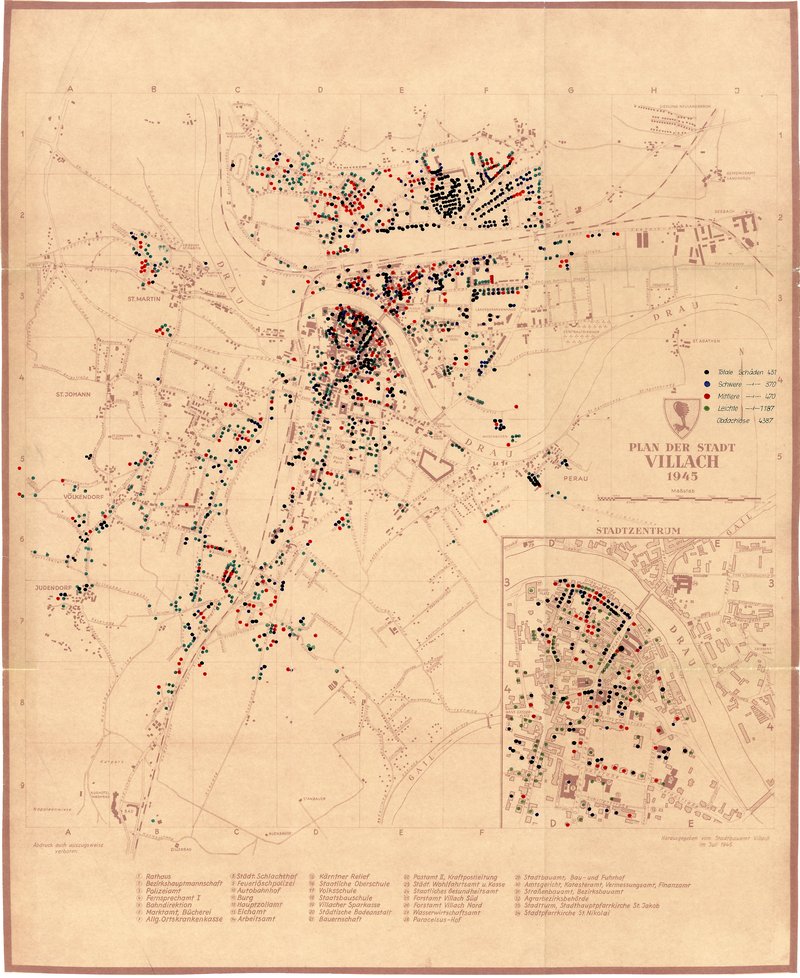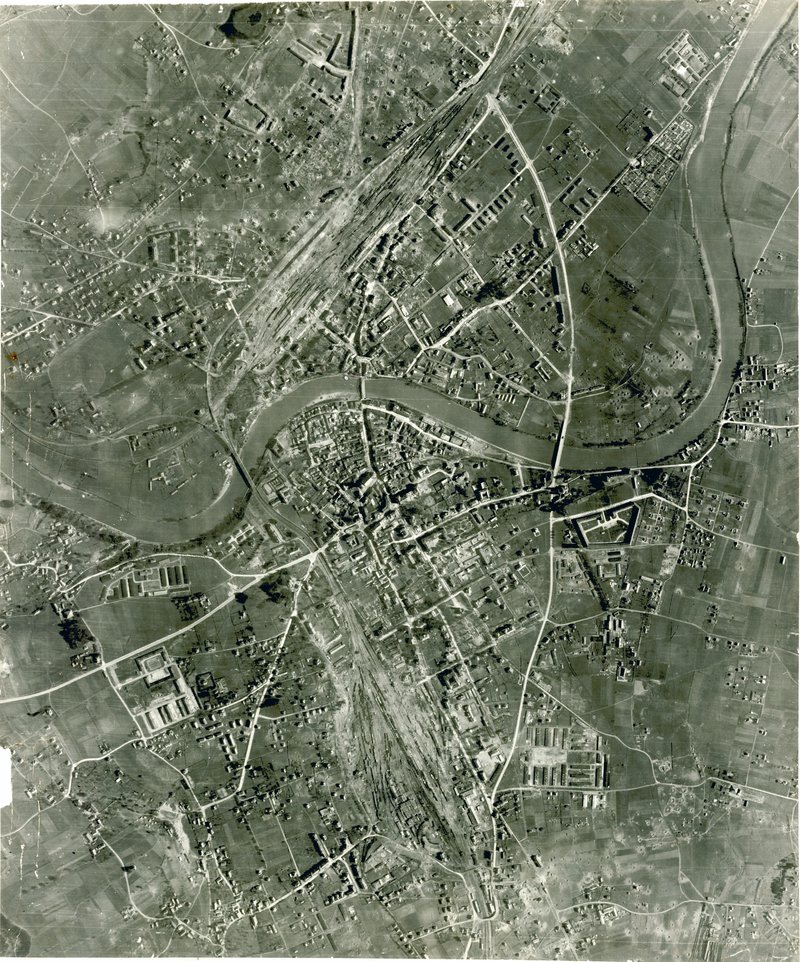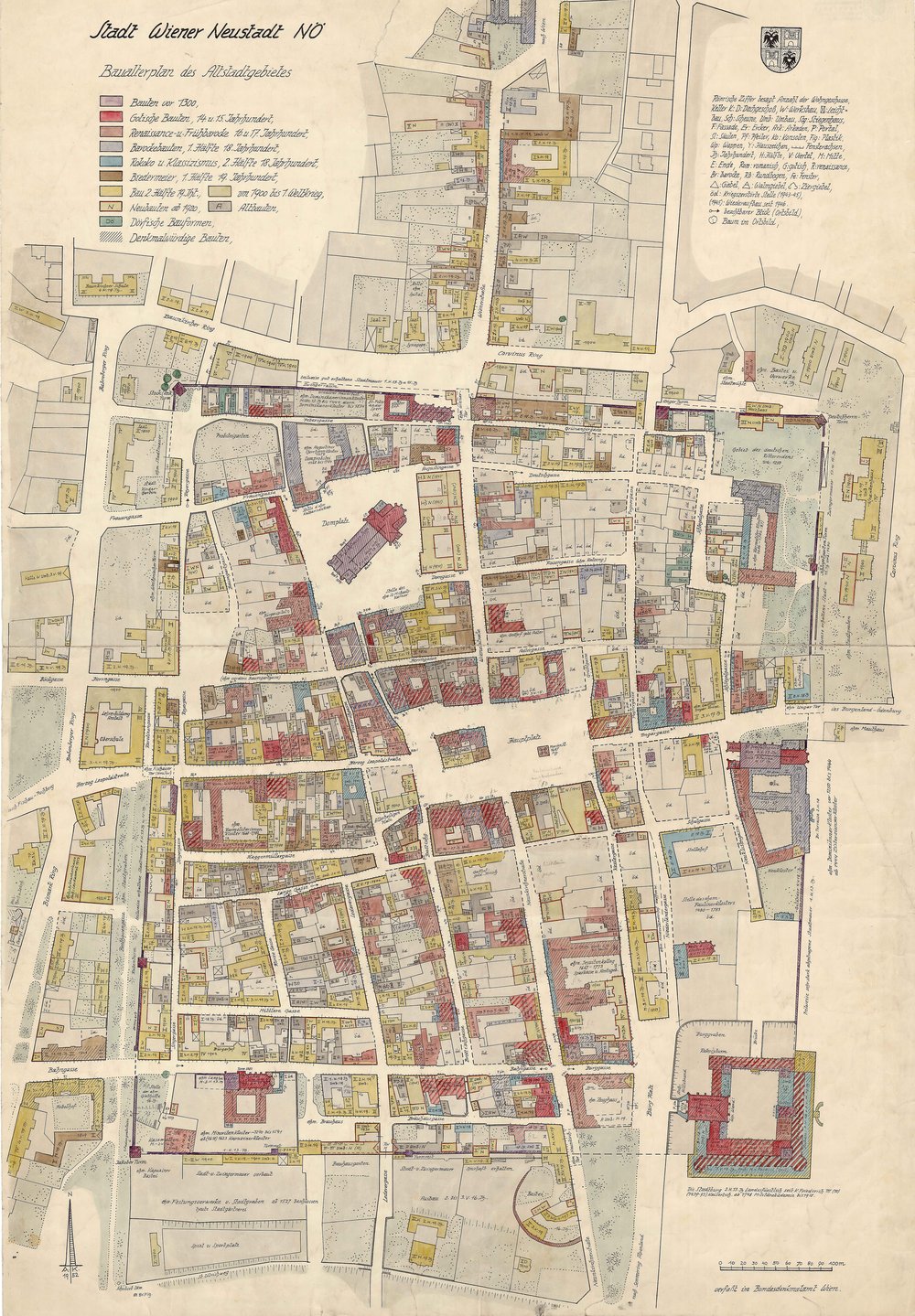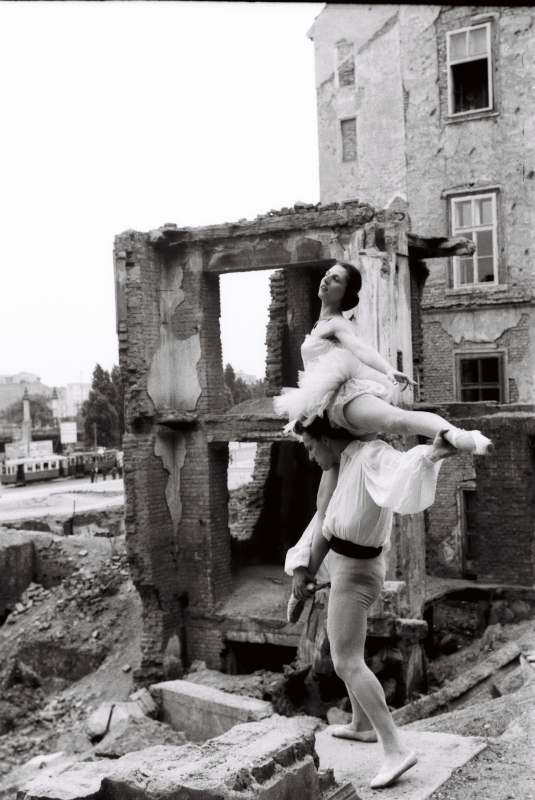
Reconstruction of war-torn cities in Austria. Transformation and heritage
Handling and significance of the built heritage in the reconstruction process
One of the aims of the sub-project is to examine the reconstruction process after the Second World War from the perspective of urban planning and monument preservation. The research focuses on the decision-making processes regarding the preservation and alteration of buildings and urban structures. Of particular interest here is the importance attached to the historical structures in the context of these reconstruction plans, as well as the role of the actors (municipal authorities, planners, monument preservation experts, occupying powers). Nine cities were selected as study examples, taking into account the degree of destruction, their size and their location (occupation zones after 1945): Vienna and Wiener Neustadt, Linz, Salzburg, Steyr, Innsbruck, Villach, Klagenfurt and Graz.
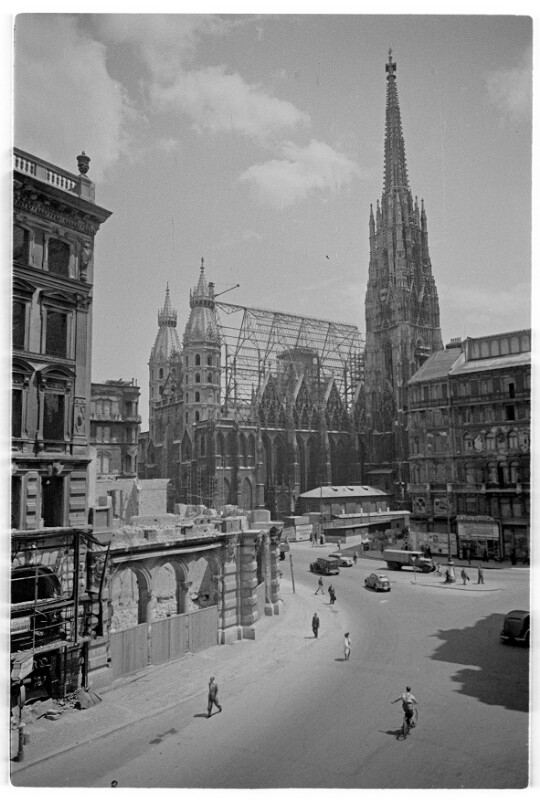
Monument preservation as an actor in the reconstruction period
Damage maps drawn up by the Federal Monuments Authority Austria and building age plans that reveal also ruins indicate the influence of the institution on the reconstruction process. The aim is to explore the role of the institution and specifically, the discipline of monument preservation as an actor in the reconstruction process. In Vienna, an expert commission was convened in July 1945 to deal with questions of city regulation, traffic, but also the preservation of the cityscape. As part of this commission, the Federal Monuments Authority named significant streetscapes and ensembles to be preserved as "Altstadt-Inseln." The role of monument preservation experts in the control of the reconstruction process will be examined: What was to be preserved or repaired and why? According to what criteria were monument assessments and reconstruction decisions made?
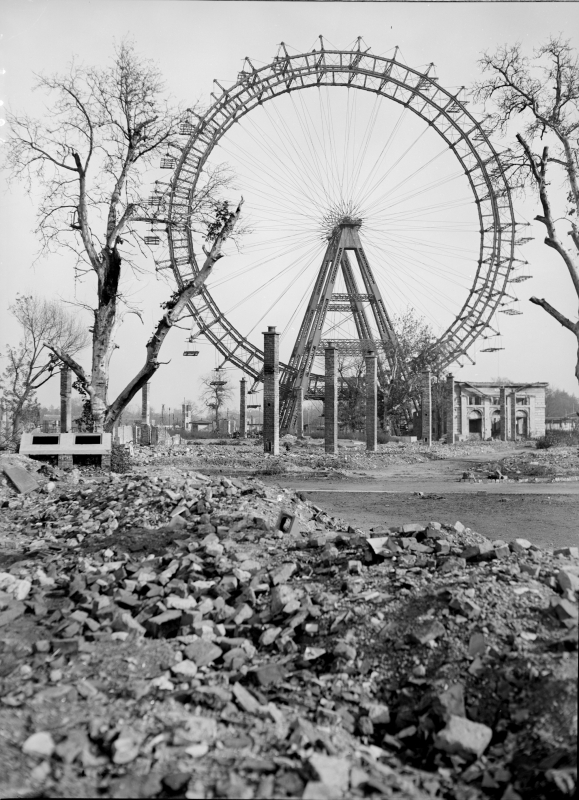
Appropriation and claiming of built heritage after 1945
An aspect that is generally important also for the above-mentioned topics is the significance of the built heritage after 1945 for society. The aim is to investigate the discourses and negotiation processes that took place in the context of the reappropriation of cultural heritage after the Second World War. Which historical buildings and urban structures have been perceived and valued as built heritage and should therefore be protected and passed on to future generations? Can this be tracked using historic city maps and other documentation material about the city?
